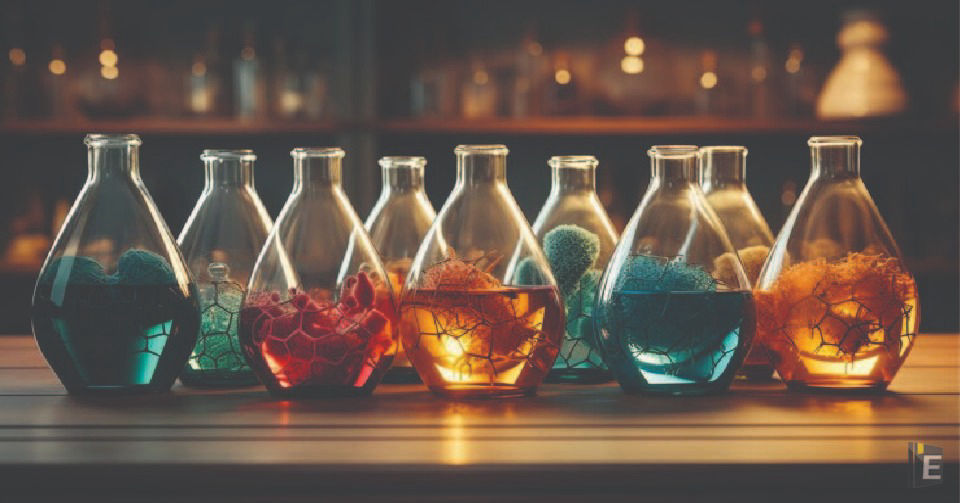Biology Questions and Answers

Welcome to our Biology Questions and Answers blog, where the wonders of life unfold through insightful exploration! Whether you're a curious student, an aspiring biologist, or simply someone fascinated by the complexities of living organisms, this platform is your go-to source for unravelling the natural world's mysteries. Embark on a journey with us as we decipher the code of life, unravel the secrets of evolution, and explore the interconnected web of living organisms. Join our community of biology enthusiasts, where curiosity knows no bounds and every question is a step toward a deeper understanding of the incredible tapestry of life.
Biology Questions
Our Biology Questions and Answers blog is dedicated to providing clear, concise, and engaging answers to many biology-related questions. From the intricacies of cellular processes to the diversity of ecosystems and the fascinating world of genetics, we delve into the realms of biology with enthusiasm and expertise.
Also, Read Latest Current Affairs Questions 2023: Current Affairs Today
"Put your knowledge to the test and excel with our General Knowledge Mock Test and Current Affairs Mock Test!"
Biology Questions and Answers
Which of these structures are absent in eukaryotes?
(A) Organised nucleus
(B) Membrane bound organelles
(C) Mesosome
(D) Nuclear envelope
Correct Answer : C
Explanation :
So, the correct answer is 'Mesosome'.
Which of the following substances has a pH value of about 14?
(A) Blood
(B) Sodium hydroxide
(C) Milk of magnesia
(D) Lemon Juice
Correct Answer : B
Explanation :
The correct answer is Sodium hydroxide. Sodium hydroxide is considered a strong base as all the available [OH] in NaOH is present in the solution as [OH−] and available to accept protons. Sodium hydroxide is the strongest base because it totally dissociates to form sodium ions and hydroxide ions.
Which one of the following flying creatures does not come under the category of birds?
(A) Bat
(B) Crow
(C) Eagle
(D) Parrot
Correct Answer : A
Explanation :
Thus, a bat is not a bird but can fly.
Which hormone is secreted by the heart?
(A) MSH
(B) CCK
(C) ANP
(D) PRL
Correct Answer : C
Explanation :
An atrial natriuretic peptide (ANP) is the hormone that is secreted by the human heart. Brain natriuretic peptide is another hormone produced by the heart which is also called a ventricular natriuretic peptide. This is secreted by the human heart when there an increase in ventricular blood volume.
Where is the stapes bone found in the human body?
(A) Ear
(B) Thumb
(C) Fingers
(D) Nose
Correct Answer : A
Explanation :
The stapes or stirrup is a bone in the middle ear of humans and other animals which is involved in the conduction of sound vibrations to the inner ear. This bone is connected to the oval window by its annular ligament, which allows the footplate to transmit sound energy through the oval window into the inner ear.
Sperm are temporarily kept in.
(A) vas' afrense
(B) urinary bladder
(C) epididymis
(D) vas deferens
Correct Answer : C
Explanation :
Along the top of each testicle is the epididymis. This is a cordlike structure where the sperm mature and are stored.
In which of the following processes, is bacteria not used?
(A) Formation of curd
(B) Baking of bread
(C) Fermentation of Sugarcane juice
(D) Nitrogen fixation
Correct Answer : C
Explanation :
Baking soda and baking powder help in baking bread. The microbe responsible for baking bread is a fungus named Saccharomyces cerevisiae for this reason it is also called baker's yeast. Hence, from the above-mentioned points, it becomes clear that bacteria are not used in the baking of bread.
What is the function of in Gill Fish?
(A) take in oxygen from the air
(B) absorb nutrients present in water
(C) absorb dissolved oxygen from water
(D) excrete waste into water
Correct Answer : C
Explanation :
Fish gills are organs that allow fish to breathe underwater. Most fish exchange gases like oxygen and carbon dioxide using gills that are protected under gill covers (operculum) on both sides of the pharynx (throat). Gills are tissues that are like short threads, protein structures called filaments.
Which of the following structures protects the eyes of a frog in water?
(A) Tympanum
(B) Eyelashes
(C) Eyelid
(D) Nictitating membrane
Correct Answer : D
Explanation :
The eyes of frogs are protected by a nictitating membrane.
Which of the following is a cold blooded animal?
(A) Ape
(B) Mouse
(C) Snake
(D) Wolf
Correct Answer : D
Explanation :
Cold-blooded animals include reptiles, fishes, amphibians, insects, and other invertebrates. Cold-blooded animals cannot regulate their internal body temperature with the change in the environment. They cannot survive in extreme temperature conditions.



